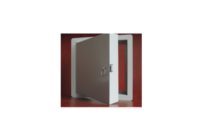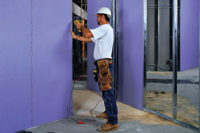What is a firestopping Engineering Judgment (EJ)? An EJ is required where there is no specific third party tested and classified firestop system available for an installed condition. EJs in firestopping are necessary on almost every construction project. The fact is, it is impossible to test firestop installations for every conceivable condition that may currently exist or arise in the future, so the best solution in many cases is a firestopping EJ. If it’s properly done there is technically nothing wrong with an EJ, “properly” being the key word. But know this, getting an EJ approved through the inspector or architect may not be easy. Fortunately, the International Firestop Council has published guidelines for such EJs and if followed should make approvals much easier.
1. First and foremost, EJs should not be used in lieu of a tested assembly that already exists.
This could be problematic for contractors and architects alike since it is difficult to know if the firestopping manufacturer will have the tested assemblies needed for a particular project.
Recommendation: Use proactive firestopping manufacturers. That, in addition to having all the traditional firestopping products, they also work closely with the metal stud manufacturer on composite steel/intumescent accessories that allow the firestopping to be built into the wall assembly. These types of joint system collaborations will provide additional tested assemblies that emphasize standard wall framing rather than those of firestopping manufacturers that emphasize filling voids after the walls are framed and drywall is installed.
2. EJs shall be issued by firestop manufacturer’s qualified technical personnel or by a knowledgeable registered professional engineer or fire protection engineer.
Make sure the EJ is coming from the actual firestopping manufacturer. Things get complicated when there are products from several different firestop manufacturers being used on a project. Only the actual firestop manufacturer can speak on behalf of their products, so when firestopping material overlaps onto another brand, or when one system terminates into another, it is difficult to get an EJ or a valid manufacturer’s warranty. Recommendation: Do your homework and find out if the firestopping manufacturer has all the UL tested joint systems you need for your project. If not, you may find yourself forced to use a different firestopping manufacturer to complete your project which may compromise your warranty. Also be sure that the firestopping system you choose has a long-lasting warranty behind it.
3. The Engineered Judgments should be based on previously tested firestop systems that are sufficiently similar in nature to the condition in question.
All the major firestopping manufacturers utilize some type of fire spray or sealant as part of their fluted deck head-of-wall joint systems. These systems will require fire spray on at least one side of the wall to ensure that there will not be any smoke passage through the mineral wool from one side of the wall to the other. Hence, with spray systems there are hundreds of similar tested joint systems in which to draw supporting data for EJs.
4. EJs need to be based upon full knowledge of the elements of the construction to be protected; the understanding of the probable behavior of that construction.
|
Framing had just started on our 22-story building in San Diego when we found out traditional fire sealant would not be aesthetically pleasing at the head of the wall in guestrooms where the top of the wall came into contact with exposed concrete ceilings (exposed inside corners). Joint size requirement would be excessive utilizing traditional firestopping methods to accommodate deflection criteria which prompted us to research other options that led us to the joint listed systems of Rectorseal and CEMCO. The CEMCO DDA provided the required deflection movement which incorporated into our traditional framing while the Rectorseal brand fire sealant was utilized at other conditions. When EJs were required, the collaboration between these two companies was very impressive and their products are easy to install. — Alex Movel, Raymond Group |
Understanding the construction elements and probable behavior of the structure is vital. Example: In high-rise or mid-rise structures with post-tension or solid concrete slab, there will be movement between the floors. Many architects unintentionally provide a detail for a static (non-movement) head-of-wall joint. This is a classic example of not understanding the behavior of the structure. A static head-of-wall joint will not provide the necessary fire-protection for a structure with movement. As a general rule, if the head-of-wall detail shows or calls out a slotted track or deflection track it is likely the structure has anticipated movement. Recommendations: Composite steel header tracks such as FAS Track 1000 or steel angles such as DDA or TrackSafe that utilize factory installed intumescent material will provide greater movement than firestop sealants and without any shrinkage, cracking or fatigue commonly associated with fire sealants, while also providing smoke and sound protection.
5. The Engineered Judgment should be limited only to the specific conditions and configurations upon which it was rendered and should be based upon reasonable performance expectations.
There is no doubt that over-reaching EJs have hampered acceptance within some inspection agencies. Example: Building deflection requirements have become greater over the past several years. Some manufacturers may not have joint systems that provide the required movement so they may attempt to supply an EJ based on their current joint system. That current system as tested will provide a certain amount of movement. To say that movement can be increased by making the joint wider and adding more material may be over-reaching as smaller joints are easier to pass the requirements of UL-2079.
6. EJs are accepted only for a single specific job and project location.
EJs in many cases are conditions that may not be able to be tested. Therefore, they are generally very specific to a project and location and should be treated as such.
When steel stud manufacturers and firestopping manufacturers collaborate, the contractor wins.
REFERENCES
April 2001 International Firestopping Council Recommended IFC/ Guidelines For Evaluating Firestop Systems Engineering Judgments (EJs).







Report Abusive Comment